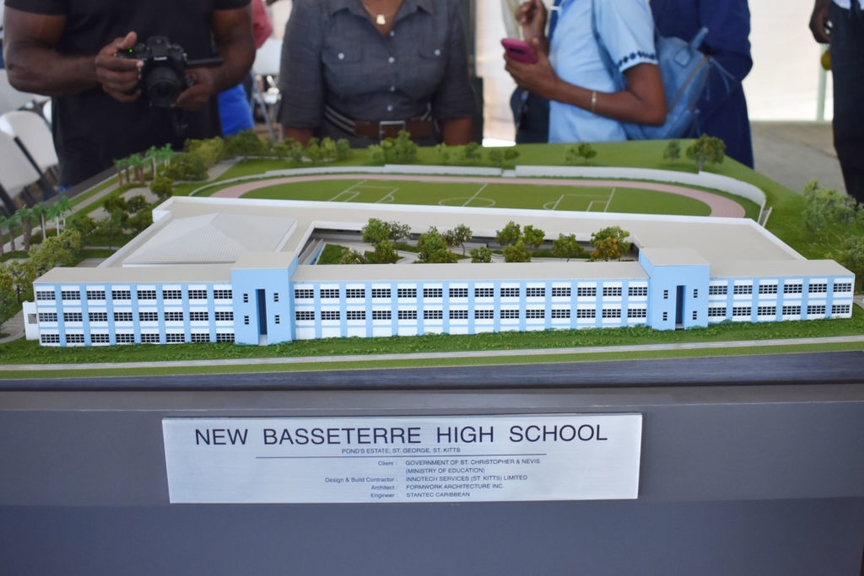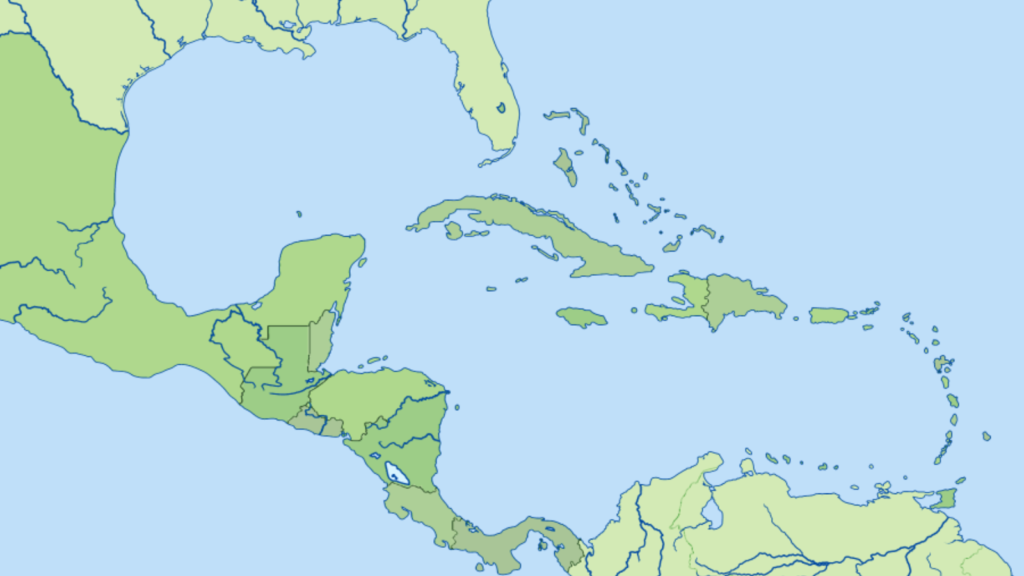Building resilient education infrastructure in the time of climate change is now a key focus of education officials across the Caribbean even though they are challenged by a lack of adequate finances.
In July, August and September, the world recorded some of its hottest days on record and the Caribbean region, which is blessed with abundant warm temperatures, was not spared by the heat.
Officials in Barbados, Guyana and St. Kitts-Nevis were among those grappling with ways of combating rising temperatures within schools. Those sweltering temperatures plagued children and teachers alike, prompting discussions of how best to build resilient education infrastructure for the safety of all within the sector.

In Guyana, which is closer to the equator and near the heart of the Amazon, the temperatures soared. Though Barbados is some distance away, education officials there were forced to take precautionary measures to tackle the heat. SKN was not spared the wrath of the heatwave, consistently registering temperatures in excess of 90 degrees Fahrenheit (or more than 30 degrees celsius).
High temperatures affect all but Dr James Hospedales, the former Executive Director of the Caribbean Public Health Agency (CARPHA), reminded people that climate change has a disproportionate effect on those most vulnerable.
Children and the elderly, he said, are among those most vulnerable.
So it is for that reason young children and the elderly should be taken care of, especially during the hot months. Children with asthma and other conditions, which can be inflamed by the hot weather, will be challenged by climate change, Dr. Hospedales noted too.
For those in the education sector, it is obvious that there needs to be a greater focus on protecting children.
Deputy Prime Minister and Minister of Education in St. Kitts and Nevis, Geoffrey Hanley recently noted that his government will take steps to ensure that the safety of children remains paramount.
In order to do that, the minister told Climate Tracker that changes will be made to retrofit buildings to accommodate for more natural air to flow.
“We will continue to do the education in terms of what is expected of them to… Even in our renovation process, we are looking at making some of our rooms compliant in terms of AC units in some of the small schools.”
More research will also have to be undertaken to better understand the benefits of having more indoor facilities to accommodate children engaging in Physical Education, especially during the summer months.
The Education Minister, however, pointed out the challenge that affects St. Kitts and Nevis and many of the other developing nations across the region: the need for more money.
Because of how badly the intense heat was affecting children, it wasn’t strange that interventions to help cope with the heat in classrooms were among the points raised by headteachers and their deputies who met directly with Guyana’s President Dr. Irfaan Ali at his official residence, State House, on October 2.

They asked for better ventilation in schools, fans and if possible, air-conditioning units.
The Principal of Skeldon Secondary School in Region Six (East Berbice- Corentyne), who is also an Executive Member of the Guyana Teachers Union (GTU), suggested the government focus on better insulation as it repairs or extends schools, or builds new ones altogether. Better insulation, he said, would act as a buffer against the sun’s ultraviolet rays.
The President, in response to these and many other concerns raised by the educators, pledged that his government would be conducting an “infrastructure audit” to determine gaps in schools. Once that is completed, he said the government would be better positioned to make targeted investments.
Short term solutions were crafted, though.
Days after the engagement, the country’s Ministry of Education issued a memorandum in response to increasing temperatures across the country in October.
The Education Ministry said uniform requirements can be relaxed at the discretion of the schools, stating learners and teachers can wear clothes that ensure they are more comfortable. Teachers were encouraged to provide more frequent breaks to children and allow them to hydrate often. Teachers were also urged to familiarise themselves with the signs of heat-related illnesses be it headaches, exhaustion, dizziness or dehydration.
In Barbados, there was a focus on short term solutions too.
The intense heat led to uniform adjustments for students in Barbados as heat waves enveloped the nation. Students were allowed to wear their physical education clothes instead of the regular uniform, which are typically lighter and more breathable in material. Infrastructural changes to address heat in schools need to be considered, however.
Like Dr. Hospedales, Guyanese Paediatrician Dr. Sonia Watts said children are among those most vulnerable to developing heat-related illnesses. As such, she said it was important to take key precautions to protect them.
In an interview, she explained that increasing temperatures and not just direct exposure to sunlight can prove detrimental. Possible health-related issues stemming from increased heat include rashes, exhaustion, stress, dizziness and dehydration.
Dr. Watts also said it is important for teachers to be better acquainted with the signs and symptoms of heat-related illnesses too since they supervise children for substantial periods of time.
Whether it’s intense heat, as was felt this year, or other disasters like floods and storms, there is a need for more resilient infrastructure in the region’s education sector. The overarching problem, however, is financing.
For Barbados, some external funds have helped the education sector.
Schools such as the Ellerton Primary School in St. George benefitted from funding provided by the Green Climate Fund Project – Water Sector Resilience Nexus for Sustainability in Barbados (WSRN S-Barbados).
The funding helped the school adapt to the changes in water availability by equipping it with a potable water tank and pump.
Through funding from the Inter-American Development Bank (IDB), Barbados’ education sector will be able to implement changes to increase climate resilience in its education sector.
The IDB project: “Skills for the Future (ii): Digital transformation for inclusive and quality education,” is supporting Barbados’ Ministry of Education strengthening the digital infrastructure, resilience and technology preparedness of primary schools. This will be achieved through audits to assess the resilience of infrastructure to climate change and technology preparedness, developing an action plan to create smart and resilient schools which upgrade technology and reforming teacher training and professional development. The IDB is also aiding in making sure climate education is integrated into the school curriculum.
Guyana has a similar partnership with the World Bank, though that project focuses more on preparing for flooding as part of efforts to build climate resilience in that country’s education sector.
In 2021, the World Bank has approved a US$6.7 million grant for Guyana to improve learning in nursery schools, increase technology use in primary schools, and improve functionality of the national education management information system.
Based on the project document, the country’s vulnerability to flooding is a key consideration, particularly along the low-lying coastline where a majority of the population resides.
“The Project would consider observed and anticipated climate change impacts and associated vulnerability of Guyana’s education system and its population.
“Under this Project, the introduction of smart classrooms and tablet interventions represents a move away from reliance on print materials and texts. Where print materials are necessary in order to reach vulnerable populations, technology such as QR codes will be used to allow access to additional materials electronically,” the document noted.
Guyana’s Ministry of Education is also building more schools, or expanding existing ones, across the country in response to population growth and regional development. Upgraded facilities, with better ventilation and greater accessibility, has been a focus.
St. Kitts and Nevis received funding from the Caribbean Disaster Emergency Management Agency (CDEMA) in 2023 to assist with the upgrading of schools, but that was challenged because of the shortage of staff at the institution.
However, one of twelve institutions were upgraded and retrofitted. “…CDEMA had approved five projects that they would normally do in the region. St. Kitts was approved but unfortunately because of their [CDEMA] lack of resources in their office, they informed me that they moved from 12 procurement officers to just one. So that in itself is taking time,” the minister disclosed.
But going forward, the minister noted that they would have to consider retrofitting schools with air conditioning to ensure the environment is conducive for learning for teachers and students.
The cost of retrofitting and constructing schools to be more resilient has increased significantly, and neither of the three territories have the resources to go in that direction. It is for this reason that it is important that regional leaders lobby for more funding to cover building resilient infrastructure at the COP28 next month.
Small Island Developing States, like those in the Caribbean, continue to be bothered by climate change, especially those within the education sector. Though they are bothered, it is hoped that more benefits will be derived from a unified approach by regional heads on the international platform.
This story was published on Sknvibes with the support of the Caribbean Climate Justice Journalism Fellowship, which is a joint venture between Climate Tracker and Open Society Foundations.